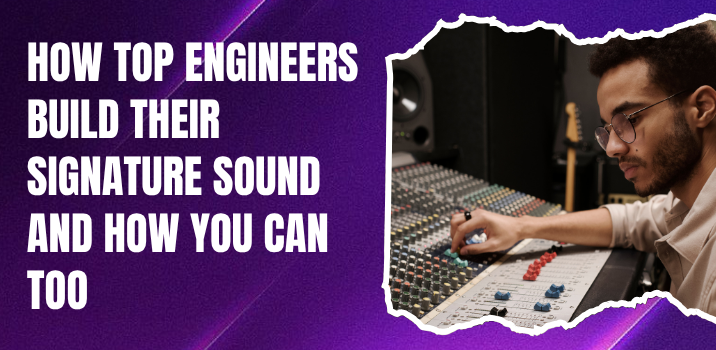How Top Engineers Build Their Signature Sound (And How You Can Too)

Every top sound engineer has a signature sound something uniquely theirs that artists and labels recognize instantly. But it doesn’t happen overnight. It’s not about reading theory all day (no need to go deep into quantum music theory) or over-analyzing how noise affects quantum computing. Instead, it’s about hands-on techniques, studio habits, and experimenting in the right creative space once you find the recording studios near me. Whether you're working out of a home setup or Googling “recording music studio near me” to level up, the path to developing your own sonic identity starts with expertising the basics and building from there. Let’s break down how the pros do it and how you can too.
Study the Greats, Then Deconstruct Their Sound
Start by listening to engineers like Andrew Scheps or Young Guru. Learn their mixing choices, but don’t copy reverse engineer. One tip? Focus on the balance, saturation, and space they use. Break it down, layer by layer, to see what makes their sound feel intentional and powerful.
Build a Reference Library of Songs You Admire
The right way to sharpen your ear is to build folders of songs mixed by engineers like Sylvia Massy or Serban Ghenea. Use them during sessions to compare low-end warmth, vocal clarity, or reverb tails. These references guide your decisions when developing your own sonic fingerprint.
Use Your DAW Like an Instrument, Not Just a Tool
Engineers like Illangelo treat Ableton Live as creatively as a keyboard. Whether you use FL Studio, Logic, or Pro Tools, customize your shortcuts, create macros, and map controllers. Your DAW should respond to your touch like a real instrument fluid, expressive, and always ready for experimentation.
Create and Save Custom Presets for Repeatable Magic
Looking for recording studios near me won’t matter if you’re not building your own sound library. Create presets for reverb chains, parallel compression setups, or vocal effects using engineers like Manny Marroquin as inspiration. Save and label everything your presets become part of your signature identity.
Master Signal Flow and Routing for Greater Control
Wanster Signal Flow and Routing for Greater Controlt a tip that separates amateurs from professionals? Study the routing style of pros like Dave Pensado. Understand aux sends, parallel buses, and pre/post-fader effects. The right signal path gives you flexibility, whether you’re recording solo vocals or mixing layered harmonies. That’s how control builds creativity.
Experiment with Mic Placement, Room Tone, and Ambient Textures
Studios matter. At any recording music studio near me, engineers like Joe Barresi tweak mic angles or blend room mics with Foley textures. Try capturing guitar with both dynamic and condenser mics, or layering background ambience from hallways and stairwells to give your mix authentic depth.
Practice Critical Listening in Different Studio Environments
Whether you’re in a treated control room or a home setup, do what Tchad Blake does switch between monitors, earbuds, and phone speakers. Use the same mix and write down what changes. This habit sharpens how you hear spatial details, low-end energy, and vocal placement everywhere.
Record with Purpose, Not Just for Practice
Instead of recording anything and everything, follow Tony Maserati’s method: record with a sonic goal in mind. Are you chasing warmth, grit, or shimmer? Define it. Intentional recording sharpens both your creative ideas and technical instincts, helping you develop a unique sound that people recognize.
Collaborate with Artists to Stretch Your Creative Limits
Working with different artists shows you how your engineering adapts. Collaborate like Kenny Beats bring their ideas into your sonic world while still offering structure. These sessions test your flexibility, introduce new concepts, and often lead to techniques you’d never try solo. Growth happens in shared rooms.
Use Noise Creatively to Build Sonic Personality
Engineer Al Green’s classic recordings included room hiss and amp hum deliberately. Don’t mute every imperfection. Layer vinyl crackle, analog noise, or mic bleed to give your sound identity. When used with intention, these details become the subtle elements that define your creative style.
Conclusion
Your signature sound requires more than flawless execution since it needs clear stylistic consistency along with continual curiosity to establish an authentic musical identity. The studio experimentation combined with testing, improvement and sustained practice creates the true creative power which overrides any scientific theories involved in noise production or quantum music principles. Working in an environment once you find recording music studio near me that generates inspiration stands as the key element for artists who want success regardless of their experience level. Whenever you need to find a “recording studios near me,” in your vicinity always remember that your sound demands a space. For this, its time, you consider MIX recording studio that will reflect your musical goals.